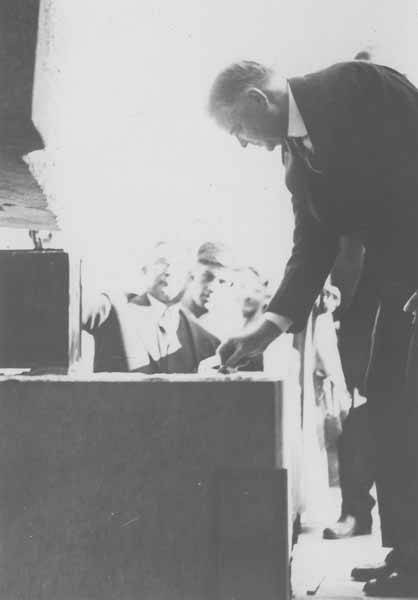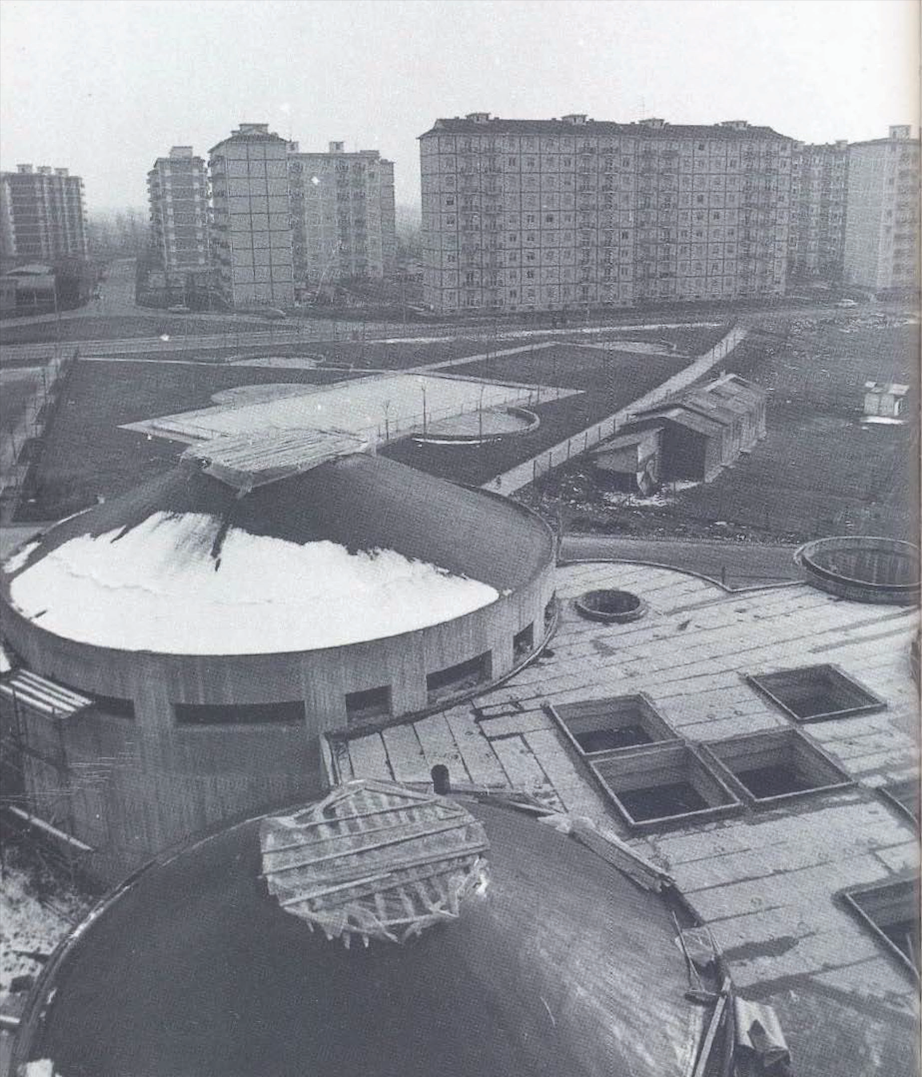10 October 2023
Building the Economy:
Design and Construction of the US Department of Commerce Building, 1927-32
CARRIE BLY
Princeton University
Respondent: Michael Osman, UCLA

Source: University of Washington Libraries, Special Collections, PH Coll 1223.3.
On June 10, 1929, a new capital building was consecrated before the American public on a construction site in Washington D.C.. Accompanied by music and celebratory speeches from religious and government officials, the cornerstone of the US Department of Commerce building was set into place by President and former Commerce Secretary Herbert Hoover using the same trowel and gavel George Washington used at the cornerstone ceremony of the US Capitol in 1793. Current Commerce Secretary Robert P. Lamont called it “A new temple of a great American faith.” Hoover himself exclaimed that it “represents the most important structure” in the US Government. This event was a performance of political theater that evinced not only the central importance of commerce to government, but also, the newly figured central importance of building to commerce. As early as 1921, the Commerce Department took aim at re-shaping the building industry, and how architects work along with it. Committees were established to revise building code, zoning, specifications, material dimensions and more. During this period, the material and labor intensive process of building construction was considered a critical means of circulating capital and facilitating new business cycles. In these conditions, the task of architecture was not just to represent, but to participate in the dynamic materialization of the economy. The design and construction of the Department of Commerce’s first dedicated building exhibits what it meant for architecture to participate in the making of economy. This Doc Talk presents an architectural history of the building to historicize how architecture and building were conceived by architects and the state as critical apparatuses in developing the terms of an economic system that encompassed both.
***
Collettivo di Architettura:
Political Engagement and Professional Practice in Milan’s Periphery (195X – 198X)
ELETTRA CARNELLI
ETH Zurich
Respondent: Andjelka Badnjar Gojnic, TU Munich

M. Zung, D. Marchesini "In punta di piedi... Giovanni Foglia il sindaco di tutti. Rozzano 1960-1985”, Comune di Rozzano, 1998, p. 38
In the post-war period, debates on the meaning and priorities for architecture and urban planning in Italy were closely intertwined with the political discussion. In this context, the Milanese communist collective Collettivo di Architettura stood out for its overt political stance. From the early 1950s to the late 1980s, Collettivo worked in the Milanese periphery for leftist building cooperatives and communist-led municipalities, attributing a social and political dimension to architectural work. Collettivo’s members integrated collaborative ways of working and political militancy in the Italian Communist Party (PCI) into their architectural practice, establishing a vast network that allowed their practice to flourish. Despite its distinctive approach and numerous projects, architectural history has paid little attention to Collettivo, particularly concerning the implications of its members’ political commitment for their work.
This presentation explores Collettivo’s professional practice in Milan’s periphery, focusing on the municipality of Rozzano, where its members worked both as municipal technicians and architects from the late 1950s to the mid-1980s. Their activity exemplifies the policies, projects, and practices that were collectively established in Milan’s outskirts: as in other leftist municipalities, Collettivo's members provided Rozzano’s administration with free professional support in urban planning. This was coupled with proactive engagements with local authorities, institutions, and economic operators. I hypothesize that by engaging with local actors, Collettivo established enduring relationships that allowed its members to gain political positions and to secure commissions for public buildings. I argue that Rozzano was one of the testing grounds for Collettivo's intentions and ambitions, where the distinctiveness and ambiguities of their practice emerged. Through the case study of Collettivo’s work in Rozzano, this presentation investigates the impact of political commitment on professional decisions, operational structures, and outcomes, including the resulting ambivalences within the political landscape of Milan’s periphery.
This presentation explores Collettivo’s professional practice in Milan’s periphery, focusing on the municipality of Rozzano, where its members worked both as municipal technicians and architects from the late 1950s to the mid-1980s. Their activity exemplifies the policies, projects, and practices that were collectively established in Milan’s outskirts: as in other leftist municipalities, Collettivo's members provided Rozzano’s administration with free professional support in urban planning. This was coupled with proactive engagements with local authorities, institutions, and economic operators. I hypothesize that by engaging with local actors, Collettivo established enduring relationships that allowed its members to gain political positions and to secure commissions for public buildings. I argue that Rozzano was one of the testing grounds for Collettivo's intentions and ambitions, where the distinctiveness and ambiguities of their practice emerged. Through the case study of Collettivo’s work in Rozzano, this presentation investigates the impact of political commitment on professional decisions, operational structures, and outcomes, including the resulting ambivalences within the political landscape of Milan’s periphery.